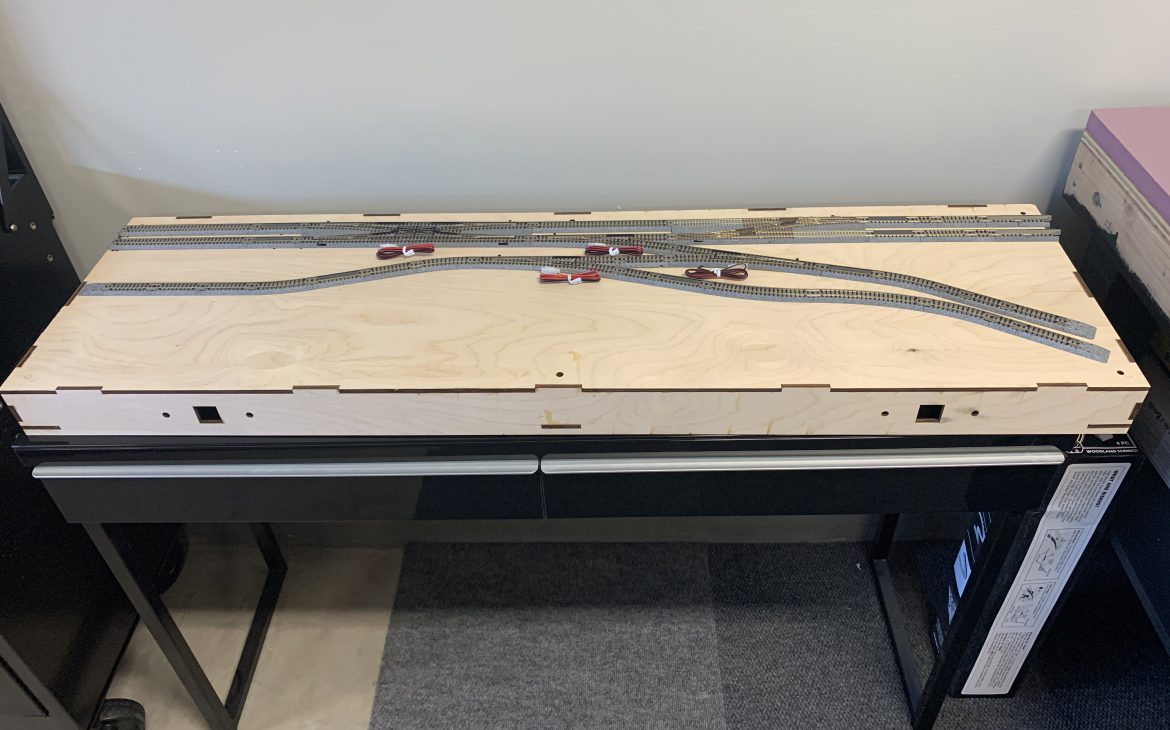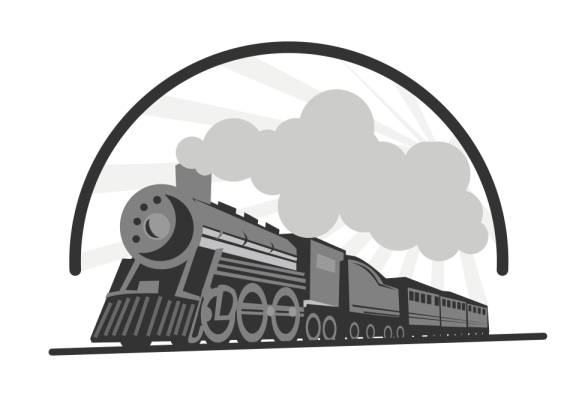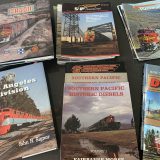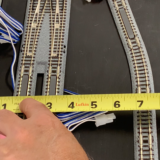The Canvas
Every model railroad starts with a foundation, or a canvas. There are many options, from open framework to shelf to T-trak or in this case, a tabletop. This tabletop is 36-inches deep, and 78-inches long.
I decided to use a tabletop environment for the Fallen Flags Junction for several reasons:
- Restricted Space
- Ability to move the layout
- Enforced limitations on distance (from point to point)
The canvas, is topped with one inch of hard insulation foam. This will allow for some interesting scenery foundation, including dipping below the railheads. A foam base also absorbs some sound. Kato track is on a plastic roadbed – it can be noisy. As you’ll discover, there are many reasons to use the Kato solution.

We’re going to use N Scale Kato Unitrak not only because it’s new (to me), very popular, and reliable, but because it’s the standard format for use in T-Trak. Canvas 1.1 is a 48-inch by 14-inch T-trak module that can be connected to any of the four corners of the main layout. That means our primary canvas will have connectivity to a nearly unlimited array of mini-modules that can convey more specific, local, and detailed locations.
Now that the canvas is in place, it’s time to pull out the plan I’ve built, and to see if it really works on this open tabletop foundation.



